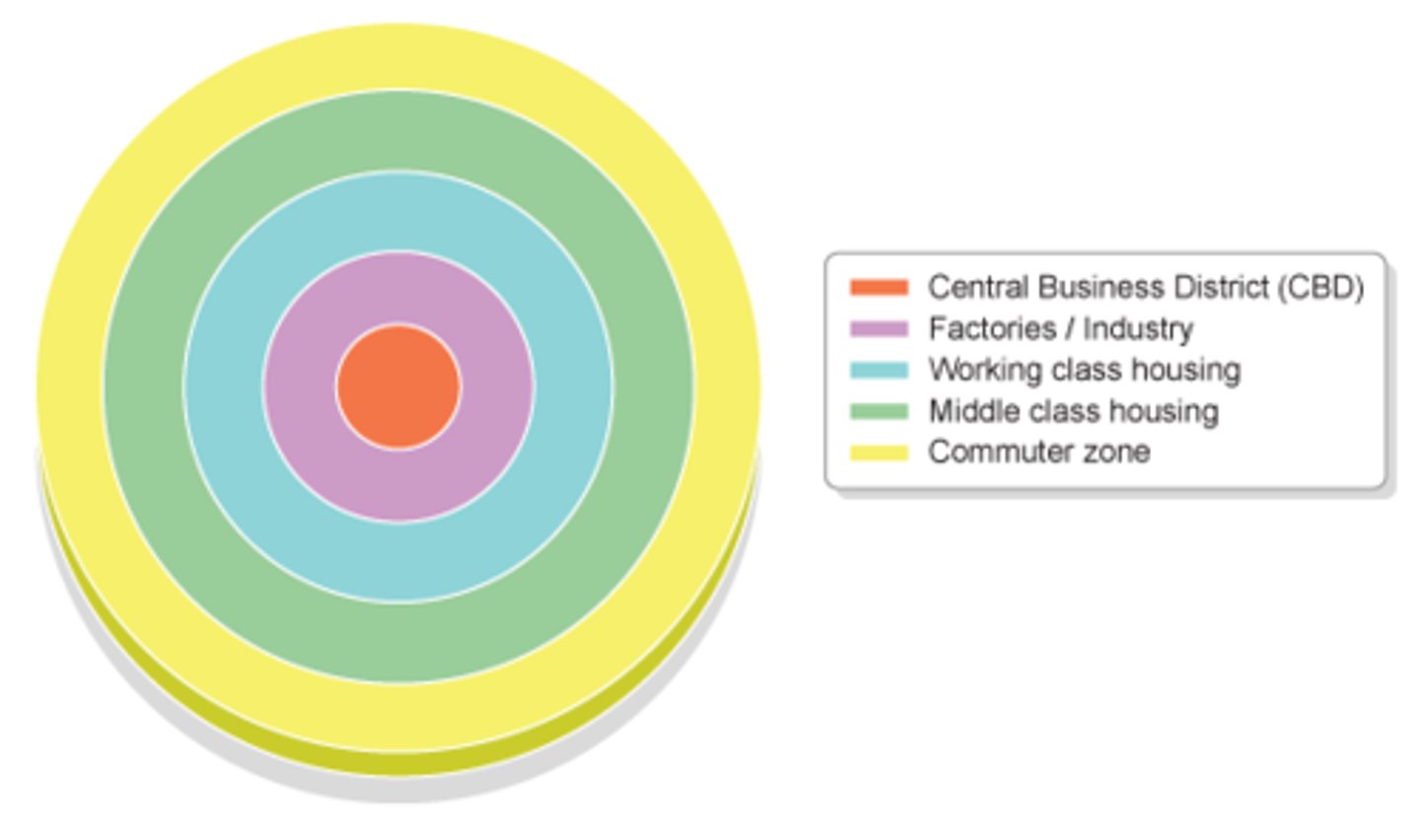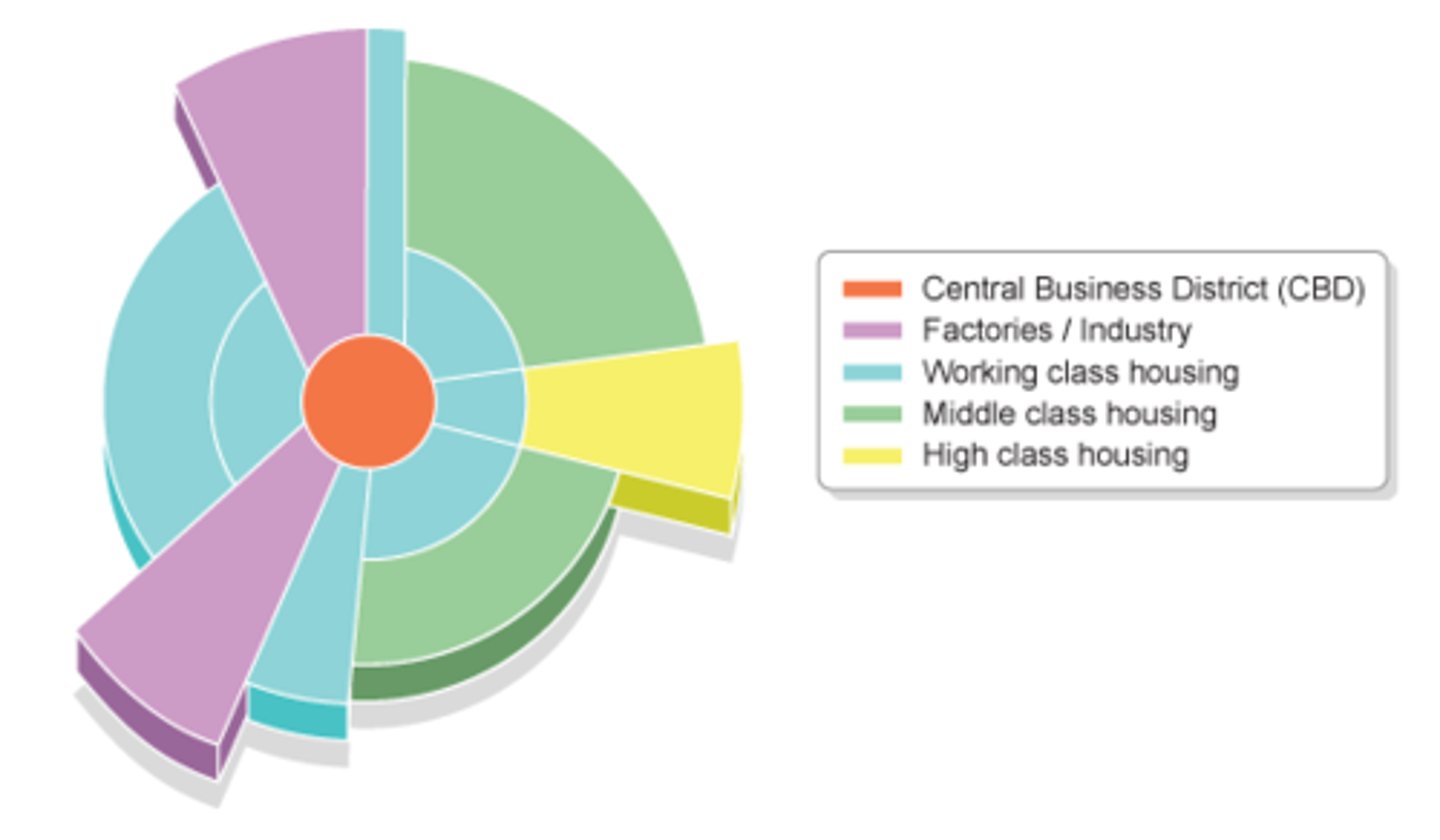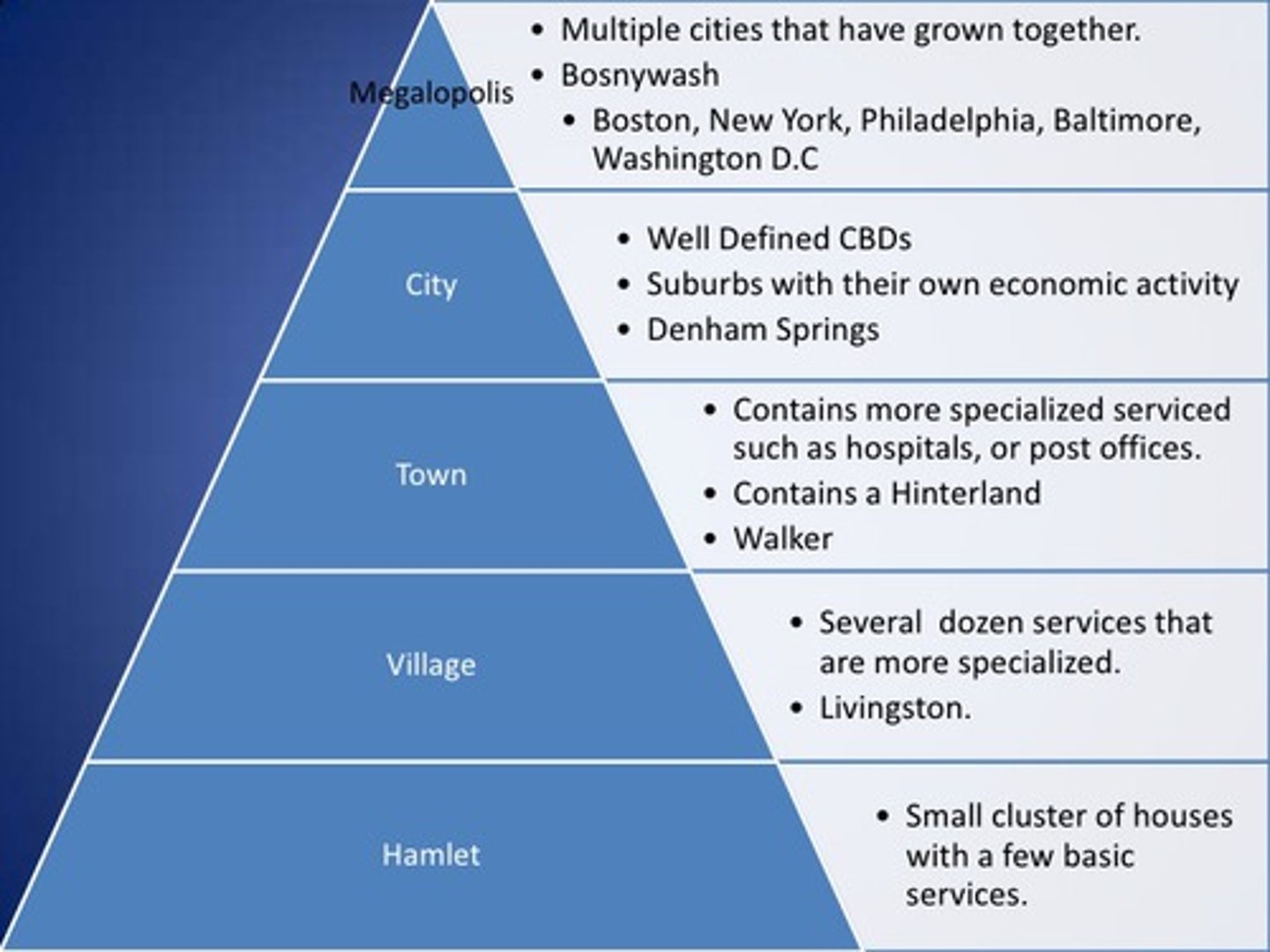IB Geography Urban Environments
1/51
There's no tags or description
Looks like no tags are added yet.
Name | Mastery | Learn | Test | Matching | Spaced |
|---|
No study sessions yet.
52 Terms
greenfield site
a piece of land that has not been built on before, but is now being considered for development
suburbanisation
outward growth of towns and cities to engulf surrounding villages and rural areas.
suburb
residential areas within or just outside the boundaries of a city
decentralisation
when manufacturing industries and people relocate outwards from the urban center
gentrification
when middle class people move into run down inner city areas with the intention of renovating the old buildings
distance decay
as distance from the PLVI increases, land prices decrease... also reflecting this, building heights decrease.
Burgess Model
land uses are arranged around the CBD in concentric circles, with the profitable uses being found closest to the city center

bid rent theory
retailers can afford the highest rents, but they are not prepared to pay high prices if they are not in highly accessible areas
Hoyt (Sector) Model
based on the circles on the Burgess model, but adds sectors of similar land uses concentrated in parts of the city. Notice how some zones, eg the factories/industry zone, radiate out from the CBD.

Peak Land Value Intersection
the point of the highest land value often resulting from the intersection of communication routes
Megacity
A city with a population of at least 10 million people.
counter-urbanisation
movement of population away from inner urban areas to a new town, a new estate, a commuter town or a village on the edge or just beyond the city limits
ecological footprint
the theoretical measurement of the amount of land and water a population requires to produce the resources it consumes and to absorb its waste under prevailing technology
Brownfield Site
Abandoned or underused industrial buildings and land which may be contaminated but have potential to be redevelopment
Shanty Housing
'Homemade' housing using scavenged materials such as corrugated iron, cloth and plastic.
Urban Decay
Reflects the lack of inner-city demand. Many vacant blocks, derelict buildings, graffiti. It is not a source of employment, tax revenue or income.
re-urbanization
development of activities to increase residential population densities within the existing built-up area of a city.
Urban Growth
Increase in size of an urban area or an increase in the number of people living in an urban area.
Urban Heat Island
Urban areas becoming warmer than their surroundings. Is done by cement retaining heat, car exhausts, pollution fumes, etc.
Urban Renewal
A governmental programme, converting run-down areas into attractive public areas. E.g. London Docklands in Sydney, Australia.
Urban Sprawl
Unplanned and uncontrolled physical expansion of a city into surrounding areas.
Urbanisation
An increasing percentage of a country's population moves into towns and cities. It can be due to migration or natural increase.
Centripetal movement
Movement toward the center. In this case, movement toward the city center.
Centrifugal movement
Movement away from the center. In this case, movement away from the city center.
The Urban ecological footprint
The land area required to sustain a population of any size. Measures the amount of farmland and aquatic resources that must be used to sustain a population, based on its consumption levels at a given point in time.
Sustainable urban management strategy
An approach to urban management that seeks to maintain and improve the quality of life for current and future urban dwellers. Aspects of management may be social (housing quality, crime), economic (jobs, income) or environmental (air, water, land, resources).
Urban Hierarchy
A national arrangement of urban areas, for example from one large city to many small villages.

Residential Segregation
The physical separation of population by culture, income or other criteria.
Physical Indicators of social deprivation
quality of housing, levels of pollution, incidence of crime, vandalism, graffiti
Social Indicators of social deprivation
inducing crime (reported and fear of); levels of health and access to health care; standards of education; proportion of population on subsidized benefits (unemployment, disability, free school meals); proportion of lone-parent families.
Economic Indicators of social deprivation
access to employment; unemployment and underemployment; levels of income.
Political indicators of social deprivation
opportunities to vote and to take part in community organization, or lack of the above
formal economy
The legal economy that is taxed and monitored by a government and is included in a government's Gross National Product; as opposed to an informal economy (ex. teacher, bank clerk)
informal economy
Economic activity that is neither taxed nor monitored by a government; and is not included in that government's Gross National Product; as opposed to a formal economy (ex. food vendor, domestic worker)
Central Business District (CBD)
The downtown or nucleus of a city where retail stores, offices, and cultural activities are concentrated; building densities are usually quite high; and transportation systems converge.
low-order goods
necessity good or those bought for convenience e.g. bread, rice, newspapers
high-order goods
Luxury or shopping good that are bought or used infrequently e.g. watches, cars
Urbanizaion (1950)
28.8%
Urbanization (2019)
>50%
Urbanization (2050)
68%
Centripetal Movements (eg)
-rural to urban migration (BLS)
- gentrification
- re-urbanization
-urban renewal
Centrifugal movements (eg)
-suburbanisation
-urban sprawl
-counter-urbanization
Cause of Heat Island
Pollution (Co2), roads, no trees, high buildings (stopping the wind), no water
Population living in Megacities
4-7% of the world's population
Generation of wealth (HIC)
80% from urban areas
Generation of wealth (LIC)
40% from urban areas
Planned city
Brazilia, Seoul
Unplanned city
Lagos, Dhaka
Resilient city
economically productive, socially inclusive and environmental friendly. To function effectively, cities need a properly functioning transport network and an efficient energy, water and waste infrastructure.
Eco-city
A city designed with consideration of environmental impact, inhabited by people dedicated to minimization of required inputs of energy, water and food, and waste output of heat, air pollution, and water pollution
Sustainable city
a city with a livable environment, a strong economy, and a social and cultural sense of community;
smart city
uses information and communication technologies (ICT) to enhance quality, performance and interactivity of urban services.